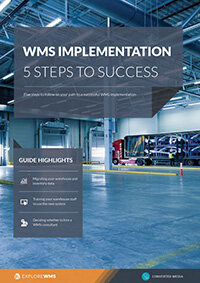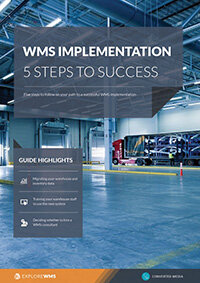Your in-depth guide to WMS testing processes
Warehouse management system implementation is complex and comes with many chances for something to go wrong.
One of the biggest threats comes during the testing phase. If you miss a step, integration, or report you need and move forward with the selection process, then you’ll have to engineer an update to your new system, expanding cost and the time it takes to have a proper tool.
We’ve put together a list of seven steps and recommendations to help you understand the processes and areas to consider when performing your WMS testing.
1. Create virtual warehouse location(s) and populate them with goods and information
This step can be done from scratch, or you can export item files from your existing systems and upload to your test platform. It can be beneficial to use the export option if any other system generates data for your new WMS — you’ll want the integration issues worked out as early as possible to avoid go-live bugs and data losses.
2. Test integration with partner systems or virtual clients
At a minimum, you’ll want to be able to see how the WMS will process inbound and outbound electronic data interchanges (EDI). This is a good chance to check which EDIs your potential WMS supports in real-world scenarios, not just in the vendor’s marketing materials.
3. Run through a complete order test
Here it’s time to pair people with the system. Fabricate a new order starting with its receipt in your e-commerce, sales, CRM, ERP, or another platform. Observe as the system processes the order and generates picking and packing instructions. Have an employee use your handhelds or scanners to return associated pick data for the order.
Create a foolproof implementation plan with this five step guide to WMS implementation success
Verify that the system is generating the needed labels and shipping information, placing orders with carriers as necessary. You’ll want a complete review of pick orders, shipping, manifesting, and any additional steps your system or team may capture.
Review the process to ensure that not only is all the information correct but that the system is maintaining a unified record.
4. Cut your digital inventory levels to test replenishment functions
In your virtual warehouse, remove goods slowly through digital orders to see when the system’s replenishment features kick on and what levels it recommends. Run through normal scenarios as well as new ones to see if the system is responsive.
5. Perform a cycle counting run
A new WMS can save you lots of time and money if you’re automating processes, especially your inventory counts. Use your warehouse and inventory to perform a cycle count and verify that it’s accurate.
You might want to test all of the cycle counting settings it offers and see how long they take. This should allow you to plan for full or partial inventory counts — based on things like how often different goods are sold — to minimize disruption while still keeping tabs on your most important inventory.
6. Review quality assurance tools
Depending on your deployment and the WMS you’re testing, there could be multiple QA functions available to you. Review the checks in separate processes to see how they fit with your existing workflow.You’ve already performed a variety of other tests at this point. Check those results and see if QA measures were taken during the processes and verify their results as well as the need.
7. Run your specialty programs and functions
Does your business have unique requirements or use specialty equipment in the warehouse? Review these instances and modules to ensure that you’re in good shape with the new WMS.
One major piece to consider here — even if you don’t think you have any unique needs — is how well the WMS is interacting with the devices and material handling equipment you use. Be thorough and ensure you’re getting all the data capture and sharing your processes require.
These are a sample of the steps you’ll want to take to make the most of your WMS testing. Whenever possible at this stage, double check and scrutinize hard. It could just save your bottom line.
Free white paper

WMS implementation guide
Plan your WMS implementation successfully with this comprehensive guide

Featured white papers
-

-

-

WMS implementation guide
Plan your WMS implementation successfully with this comprehensive guide
Download
Related articles
-

WMS implementation guide including checklist & project plan
A guide to the entire WMS implementation process - from change management planning to go-live
-

Mission-critical features of food lot traceability software
What features of food traceability software will help you during a food recall
-

Warehouse picking and packing processes: how much labor do you need?
Logiwa's Erhan Musaoglu shows you how to calculate picking and packing labor requirements for you...

